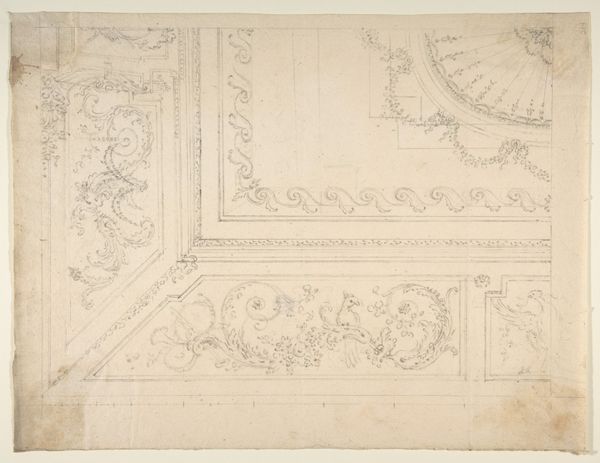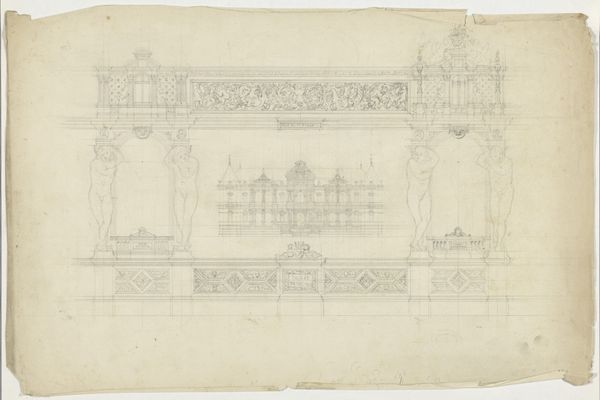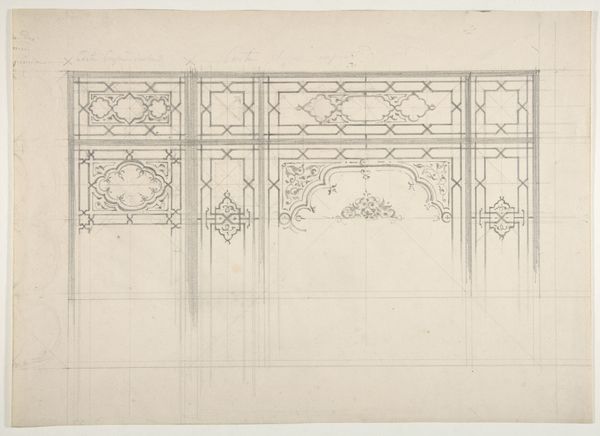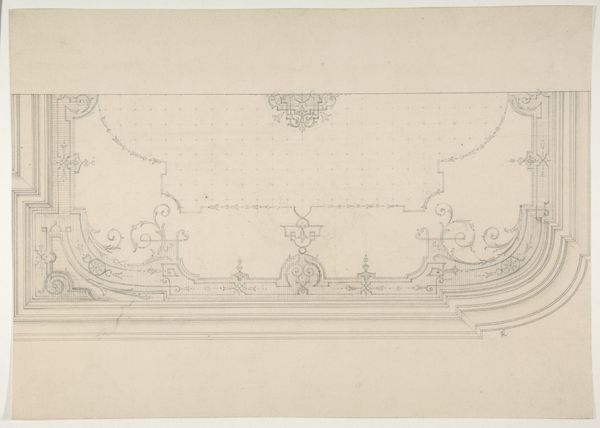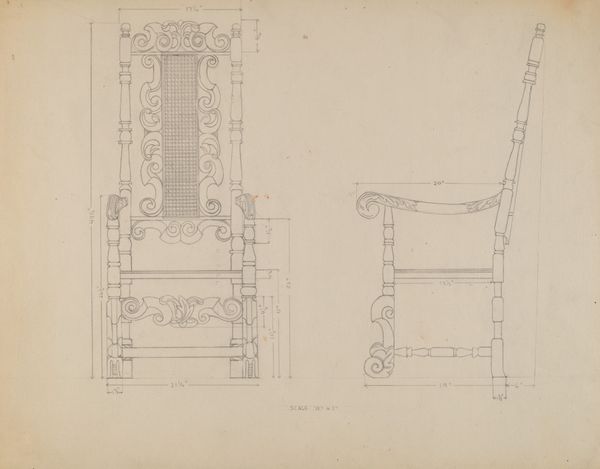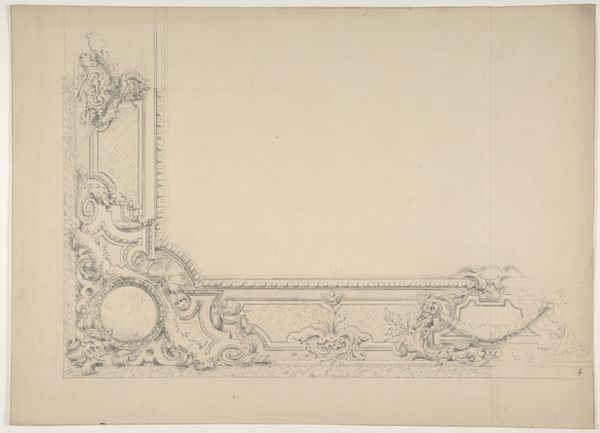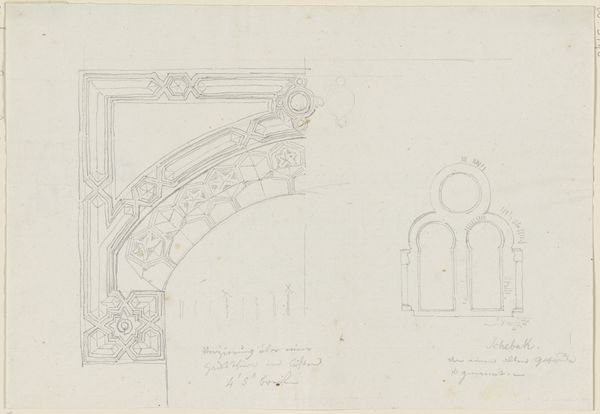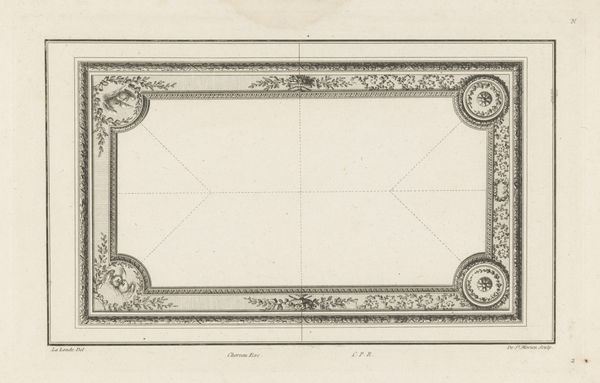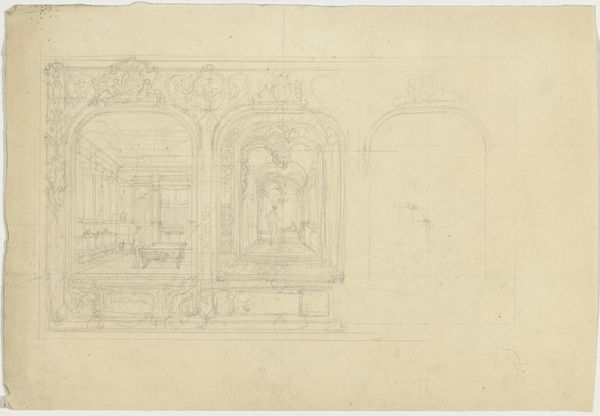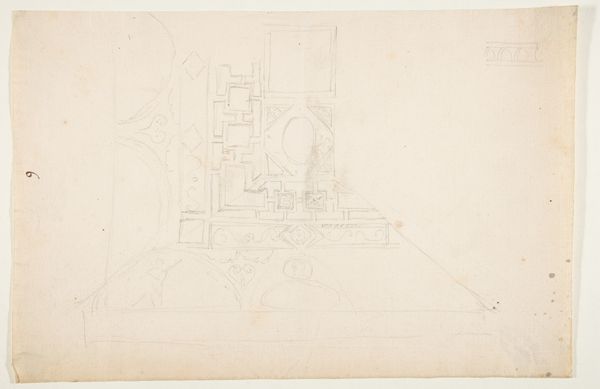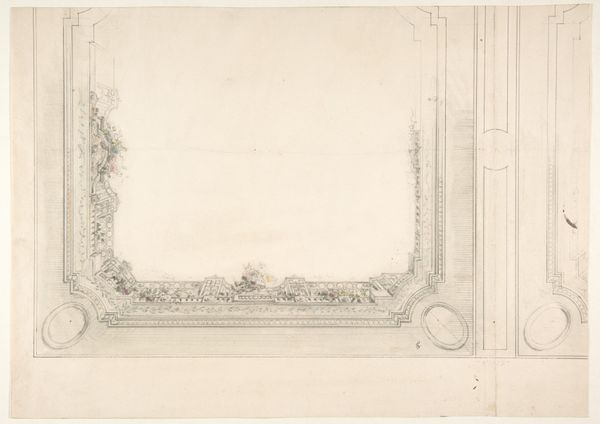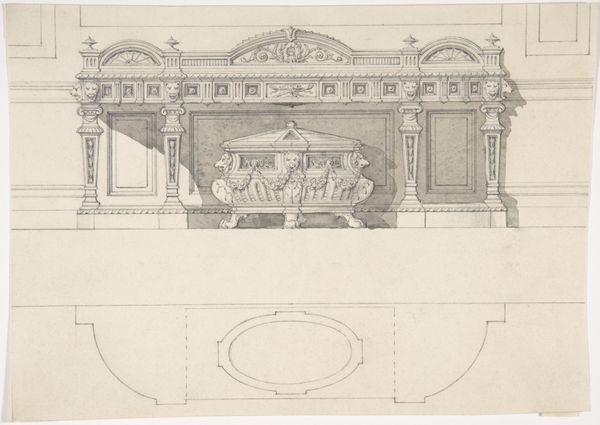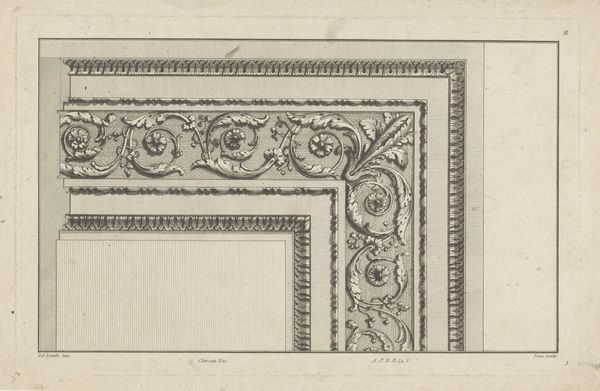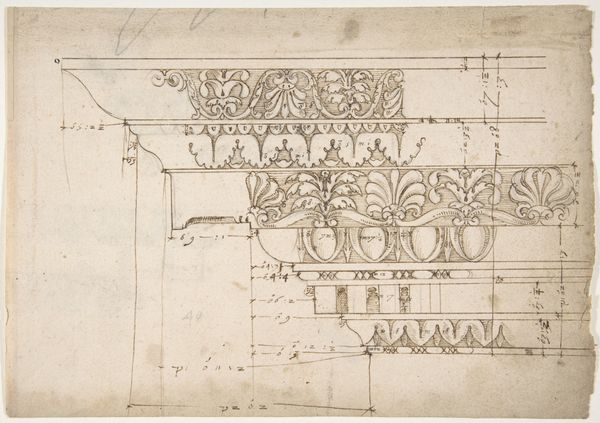
Three Designs for Ceilings, Hôtel Cottier 1874 - 1884
0:00
0:00
Dimensions: 10 3/8 x 14 7/8 in. (26.4 x 37.8 cm)
Copyright: Public Domain
Editor: Here we have Jules-Edmond-Charles Lachaise's "Three Designs for Ceilings, H\u00f4tel Cottier," created between 1874 and 1884. It’s a drawing, primarily pencil and print, and what strikes me is how meticulously detailed the linework is, almost like an architect’s blueprint, and the almost neoclassical design. What aspects of this piece capture your attention most? Curator: I see here a fascinating intersection of design, labor, and consumption. It’s not just a pretty drawing. Lachaise documents ceiling designs destined for a hotel. Consider the labor involved, from Lachaise's detailed design to the artisans who would have executed this, the plasterers, painters, and gilders, all contributing to a decorative scheme intended to create a certain ambiance. How does the intended location, the hotel, influence your reading of the piece? Editor: Knowing it was meant for a hotel…I guess it seems more performative now. These weren't just designs; they were intended for a public space, aiming to impress and maybe even sell a certain lifestyle. Is that part of the intent? Curator: Precisely. Hotels in this period were stages for social display. The materials chosen, even the style itself referencing neoclassical ideals, speak to aspirations of refinement and luxury. The hotel is itself a commodity and so are its interior elements. The ceilings become a subtle form of marketing, selling not just a room but an experience. Editor: That makes perfect sense. I hadn’t thought of the design as being related to commodity, but hotels selling luxury makes it obvious. Curator: Exactly. And think of the paper itself, the pencil, the printing process – each step embodies material choices reflecting economic considerations, accessibility of materials and technologies shaping the outcome. Reflecting on it this way encourages us to go beyond pure aesthetics, examining how this design participated in a larger network of labor and consumption. Editor: This was incredibly insightful. It’s shifted my thinking about how architectural design isn’t just about the final product but about a whole web of processes and purposes. Curator: I agree; considering the socioeconomic contexts definitely expands the meaning behind this work, moving it beyond just a visual study.
Comments
No comments
Be the first to comment and join the conversation on the ultimate creative platform.
